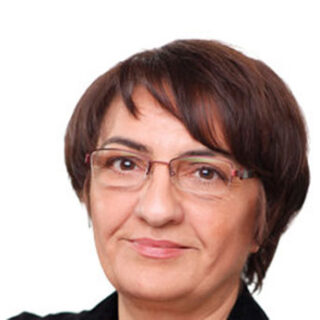On the night of April 4 – 5, 1992, the siege of the city of Sarajevo, one of the longest-standing sieges in modern war history, began and lasted until February 29, 1996. Sarajevo was under siege for 1,425 days and 13,952 people were killed during the four years, or 14.54% of the total human loss in Bosnia and Herzegovina.
A total of 8,388 Sarajevo residents, members of the Army of the Republic of Bosnia and Herzegovina were killed in the defense of Sarajevo.
The book ‘Bosnian Book of the Dead’ by Mirsad Tokača, director of the Research Documentation Center (IDC) in Sarajevo, explains in more detail the age, gender and national structure of war victims in the Sarajevo area, which was then organized in ten municipalities, in four central municipalities (Center, Novi Grad, Novo Sarajevo and Stari Grad) and six municipalities in its surroundings (Ilidža, Hadžići, Pale, Ilijaš and Trnovo).
The most war victims were in the municipalities of Center and Novi Grad, 3,387 and 3,129, respectively, which is almost half of the total number of casualties in the City. A total of 5,564 civilians were killed in the ten municipalities. The largest number of women civilians killed, 860 were killed in the municipality of Centar, out of a total of 9,500 women civilians killed in Bosnia and Herzegovina.
On the other hand, out of a total of 11,746 men killed, 8,271 were soldiers. The status of soldiers killed 117 of the total 2,206 women killed during the siege of Sarajevo.
The highest number of persons killed in the status of soldiers was in the municipality of Novi Grad, 2,020 or 24.42% of the total number of killed men-soldiers.
In the siege of the city, 2,241 persons were killed in JNA-VRS units, which according to the 1991 census were registered as a residents of Sarajevo, which is 26.72% of the total number of soldiers killed.
Age structure
The highest concentration of age of war victims is between 25 and 45 years. In this age group, 6,073 inhabitants of Sarajevo were killed or 43.52% of the total number of casualties, with the participation of soldiers in this age range being 4,865. The highest number of civilians killed is between 45 and 65 years old, 2,023 of them, compared to the total number of civilians killed (5,564). In Sarajevo, 705 minors were also killed, 611 of whom were killed as civilians, and 94 died as soldiers. Unfortunately, the exact date of birth was not determined for 1,123 or 8% of persons.
National structure
Of the total number of casualties, 9,429 or 67.58% are Bosniaks, of whom 5,574 were killed in the status of soldiers and 3,855 were killed as civilians. A total of 3,573 Serbs were killed on the territory of Sarajevo. Of these, 1,097 were civilians (443 women and 654 men) and 2,476 soldiers, of whom 2,241 were members of the JNA-VRS. In the defense of Sarajevo, 235 Serbs were killed in units of the Army of the Republic of Bosnia and Herzegovina. Out of a total of 810 Sarajevo residents of Croat ethnicity, 482 died as civilians and 328 died as City defenders in ARBiH units. Of the 140 casualties of other nationalities, 27 were killed in Sarajevo’s defense.
Time distribution
Sarajevo had the highest number of war victims in 1992 – 7,740 war victims. Most civilians were killed in May – 995, June – 1,721, July – 894 and August – 962. In June 1992, the largest number of civilians was killed in relation to all other months of the siege. In that month, 759 Sarajevo citizens were killed.
Crimes in Kazani
The crimes in Kazani were committed by members of the 10th Mountain Brigade of the Army of the RBiH, headed by Mušan Topalović – Caca. Sarajevo residents, mostly Serbs, were killed at this site. The exact number of those killed is still unknown. So far, fourteen members of the RBiH Army have been sentenced from ten months to ten years in prison. The trial of Samir Bejtić, which has been underway for the fourth time before the Cantonal Court in Sarajevo since 2015, is still ongoing. In earlier proceedings, Bejtić was sentenced to 14.5 years in prison (2006) and then twice acquitted (2008 and 2011). The Supreme Court of the Federation of BH has each time overturned the judgments of the Cantonal Court and pointed out significant violations of the criminal procedure provisions. (Data from the Association for Social Research and Communications).
Senad Džananović and others
On 16 January 2017, the Court of Bosnia and Herzegovina confirmed the Indictment charging the Accused Senad Džananović, Edin Gadža and Jasmin Erović with the criminal offense of War Crimes against Civilians. The Indictment charges the accused that during the war and armed conflict between members of the Armed Forces of the BiH Army and the RS Army between April and August 1992, in the area of Alipašin Field, Novi Grad Municipality, Sarajevo, as a members of the Stela TO and Special Forces BH Army, together with superiors Jusuf Prazin and Samir Kahvedžić, knowingly and willingly participated in a joint criminal action aimed at the unlawful detention of Serb civilians who were illegally imprisoned in the city of Sarajevo, and subjected to murder, rape, torture, inhumanity treatment, forced labor, and various forms of physical and psychological abuse.
In the case of Senad Džananović and others, on 05 July 2018 the Court ruled a decision separating the criminal proceedings against the accused Senad Džananović and Edin Gadža, so that the proceedings on the indictment according to BH Prosecution in relation to the accused Jasmin Erović will be leaded and completed separately. (Information from the official website of the Court of BH)
Mustafa Đelilović and others
The indictment alleges, inter alia, that Mustafa Đelilović, as the President of the Hadžići Municipal Assembly and as the President of the Crisis command later the Hadžići War Presidency, Fadil Čović, as the Chief of the Hadžići Public Safety Station (PSS) and also a member of the Crisis command later the War Presidency of the Municipality Hadžići, Mirsad Šabić, in his capacity as an active police officer of the Hadžići PSS and later as commander of the Pazarić Police Station, Nezir Kazić, as commander of the 9th Mountain Brigade of the Army of the Republic of Bosnia and Herzegovina, Bećir Hujić, in his capacity as the principal of the „Silos“ camp, Halid Čović, as deputy principal of the „Silos“ camp, Šerif Mešanović, in his capacity as one of the deputy principal of the „Silos“ camp, and as well as a principal at the warehouse of „Krupa“ barracks in Zovik, Nermin Kalember in his capacity as guardian in „Silos“ camp in the period from may 1992 until January 1996, knowingly and willingly participated in a systematic joint criminal actions within which, they plan, order, commit, incite, support and assist the criminal offense of War Crimes against Civilians and the Crime of War Crimes against Serb Prisoners of War at the „Silos“ facilities in Tarčin, in elementary school "9maj" in Pazarić and warehouse of "Krupa" military barracks in Zovik. Đelilović and the others were sentenced to a total of 60 years in prison in the first instance.
However, The Council of Section I for War Crimes of the Appellate Division of the Court of BiH after the session of the Appellate Division Panel issued a decision on upholding the appeals of the Prosecutor’s Office of BH and the defenders of the accused Mustafa Đelilović and Halid Čović and the first instance Court decision judgment dated on 5 July 2018 has been canceled. It was adjourned and ordered that the hearing to be held before a panel of the Appellate Division of the Court of BiH. The hearing of the Appellate Division Panel commenced on 17 September 2019.
(Information from the official website of the Court of BH)
Viktor Bubanj
The Court of Bosnia and Herzegovina sentenced defendant Ramiz Avdović to three years in prison and defendant Vintil Iualian Nicolae to two years in prison for crimes committed in the former “Viktor Bubanj” military Barracks in Sarajevo. The Court issued a decision suspending criminal proceedings against the accused Besim Muderizović on the grounds of the accused’s death.
They were found guilty of inhumane treatment of Serb civilians in a former military prison – the “Viktor Bubanj” military barracks – from late June until the end of November 1992. (Data from official web page of the Court of BiH and from detector.ba pages)
Judgments in The Hague
The Hague Court of Appeals in 2009, convicted Dragomir Milošević, a former Bosnian Serb army general, for crimes committed against Sarajevo civilians from 1994 to 1995 after taking command of the Sarajevo-Romanija Corps from Stanislav Galić, who was convicted by The Hague tribunal. to life imprisonment. The Trial Chamber found that Milošević was guilty of crimes against humanity and violations of the laws or customs of war.
His first verdict came in 2007, when he was sentenced to 33 years in prison for campaigning for snipers’ actions and shelling Sarajevo, aimed at spreading terror among civilians. Following the appeal, the sentence was reduced from 33 to 29 years, because the Appeals Chamber relieved Milošević of responsibility for sniping at civilians but established his command responsibility for failing to prevent and punish the perpetrators of these crimes. The Appeals Chamber overturned the convictions of Milošević for shelling a market in Baščaršija on 22 December 1994, the BITAS building on 22 August 1995 and Markale market on 28 August 1995, during which 43 civilians were killed and 84 injured.
(Summary judgment in the case Prosecutor v. Dragomir Milošević and RSE)
On 30 November 2006, the Appeals Chamber of the International Tribunal sentenced former Bosnian Serb Army Commander Stanislav Galić to life imprisonment for his role in the sniper operation and the shelling of civilians in Sarajevo from September 1992 to August 1994. This is the first time that the International Court of Appeal imposed a maximum sentence.
The Appeals Chamber rejected all Galić’s 19 grounds of appeal. In the conclusions of the Appeals Chamber, the Trial Chamber found that the evidence showed beyond reasonable doubt that Sarajevo civilians were indeed the target of a deliberate attack by the SRK forces. Civilians were attacked at funerals, ambulances, trams, buses or bicycles. They were attacked while plowing gardens, shopping at the market or cleaning the city streets. Children were the target of attacks while playing or walking the streets. The attacks were mostly carried out during the day. They were not the answer to any war threats. In most cases the assailants could clearly see that their victims were engaged in daily civilian activities.
The Appeals Chamber specifically dealt with a number of incidents, including the incident of 5 February 1994 when a mortar shell exploded at the Markale Market in downtown Sarajevo and killed 68 people and wounded more than a hundred.
Former President of Republika Srpska, Biljana Plavišić was sentenced in 2003 to 11 years in prison. She pleaded guilty to involvement in, among other things, crimes committed in Sarajevo.
The text was created in collaboration with tacno.net.




